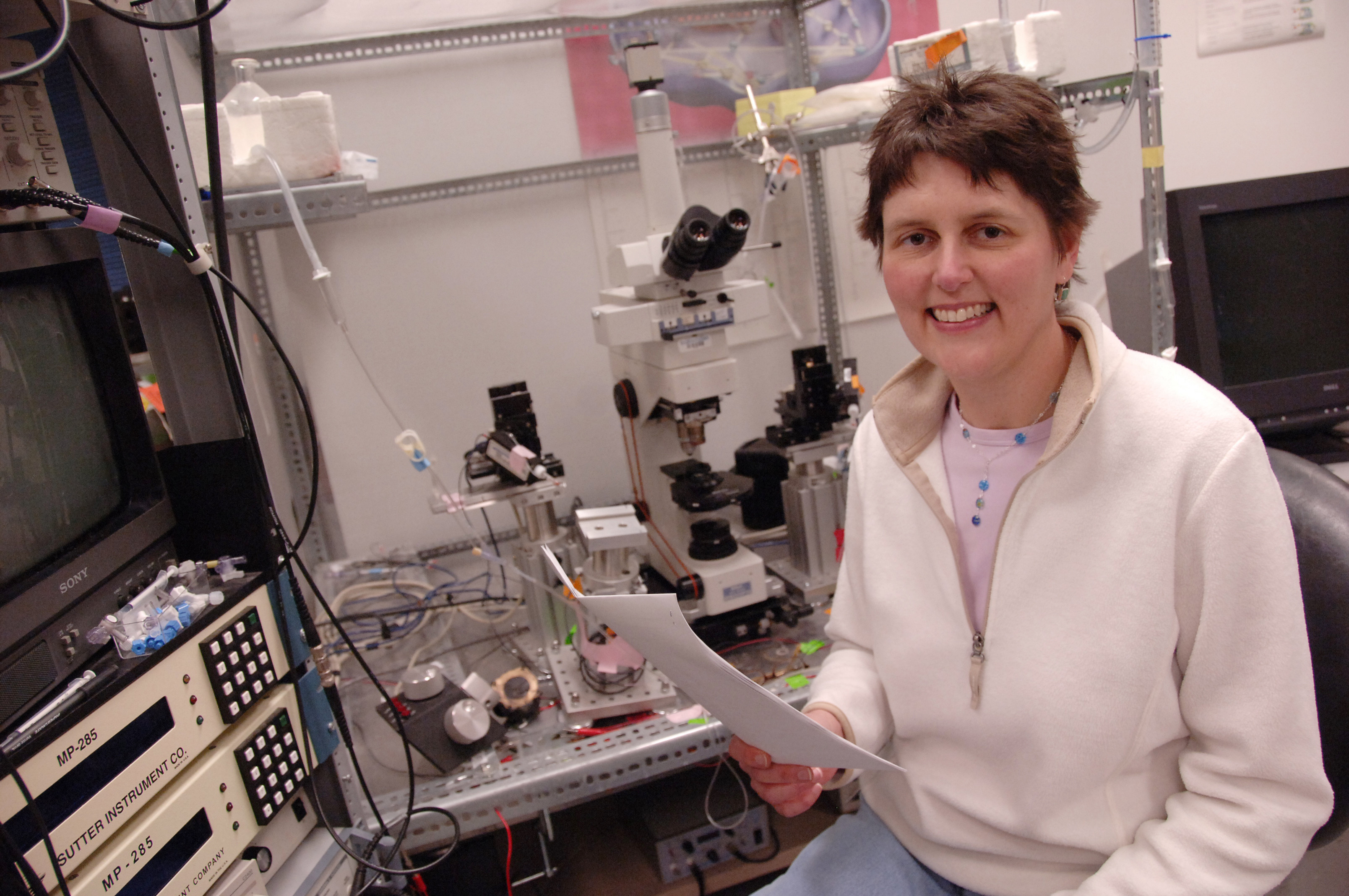
Sensory Overload
Ever wonder why your child with Fragile X suddenly screams for no apparent reason or jumps and flaps uncontrollably seemingly for hours?
You got it: hyperexcitability.
But what exactly causes it? And what can fix it?
Kimberly Huber, PhD, is working long and hard in her lab to answer those questions.
Dr. Huber, professor, Neuroscience, UT Southwestern Medical Center, is seeking to understand how FMRP regulates connections between brain cells, called synapses, and the function of brain circuits, which are several connected brain cells.
Her current focus is the study of synapses and brain circuits in the mouse that mediate sensory perception, including perception of touch and sound. She aims to understand the cellular and molecular mechanisms by which loss of FMRP causes hyperexcitable sensory circuits. The goal: to develop targeted therapeutics that can restore normal brain function and reduce sensory hypersensitivity.
“Sensory brain circuits are overactive, or hyperexcitable, in the FXS mouse model,” said Dr. Huber, who earned a doctoral degree in 1995 from The University of Texas Graduate School of Biomedical Sciences in Houston. “We hope to develop new targeted therapeutics to reduce such hyperexcitability and other sensory-related issues in Fragile X, such as sensory avoidance and hyperarousal.”
In FXS mouse experiments, several different drugs are known to have rapid, within hours or days, reductions on sensory circuit hyperexcitability. This same affect has not yet been repeated in people with FXS, but Dr. Huber is optimistic there will be similarly rapid and acute effects. She aims to determine if effects of acute treatments on the EEG would predict therapeutic efficacy on behavioral symptoms with more long-term treatment.
Testing Treatments with EEG
Dr. Huber’s study is part of a multi-project Fragile X Research Center with colleagues at UT Southwestern and researchers at UC Riverside and Cincinnati Children’s Hospital. Working together, the researchers aim to develop similar neurophysiological measures of sensory circuit hyperexcitability and dysfunction in the FXS mouse models and in individuals with FXS. To do this, they use EEG recordings of brain electrical activity from the scalp of mice and humans.
“We measure brain activity during rest and in response to sensory stimuli, in our case a sound,” she said. “My collaborators in our Center have been successful in finding similarly abnormal EEG responses to sound in both the mice and people with FXS. Using these EEG measures, we plan to determine if treatments that correct sensory circuit hyperexcitability in Fragile X model mice also do so in humans. This will help us to test and screen novel potential therapeutics in mice and then test, using the same types of EEG measures, in individuals with FXS.
“The biggest benefit is the development of a quantifiable, objective biomarker of brain dysfunction in Fragile X that can translate from mouse to man. Development of such a biomarker can benefit not only Fragile X, but other related diseases characterized by abnormal sensory circuit function, such as autism.”
Of Mice and Humans
One obstacle has been the technical challenges in developing EEG recordings to compare brain activity levels in mice and humans.
“The differences between mice and human brain size, anatomy and behavior present technical hurdles, but we are confident we will overcome these obstacles,” Dr. Huber said.
Work in the Huber laboratory is supported by grants from the NIH, FRAXA Research Foundation, The Simons Foundation for Autism Research Initiative and The Hartwell Foundation.
“FRAXA has supported my work since I was a postdoc, more than 15 years ago,” she said. “FRAXA has been instrumental in our advances in understanding the cellular and molecular mechanisms. With FRAXA support, we have determined a molecular connection by which FMRP leads to dysfunction of mGluR5. Although clinical trials with mGluR5 antagonists have yet to be successful, we hope to determine mGluR5 and related mechanisms are effective in correcting sensory circuit hyperexcitability in both.”
Fragile X Research Leads the Way
Dr. Huber believes being a Fragile X researcher has given her more sense of purpose to her research and career.
“Knowing my research may someday help families affected with Fragile X motivates me and also sets a good example for my kids, who realize I am doing something in my job to try to help others less fortunate that us,” she said. “I would like to thank all the people who have donated to FRAXA, for their support of FXS research. As a result, there has been tremendous progress in understanding brain dysfunction and development of therapeutics in Fragile X over the past 15 years. FXS research is really advanced and leads the way for research in other neurodevelopmental disorders and autism in general.”

